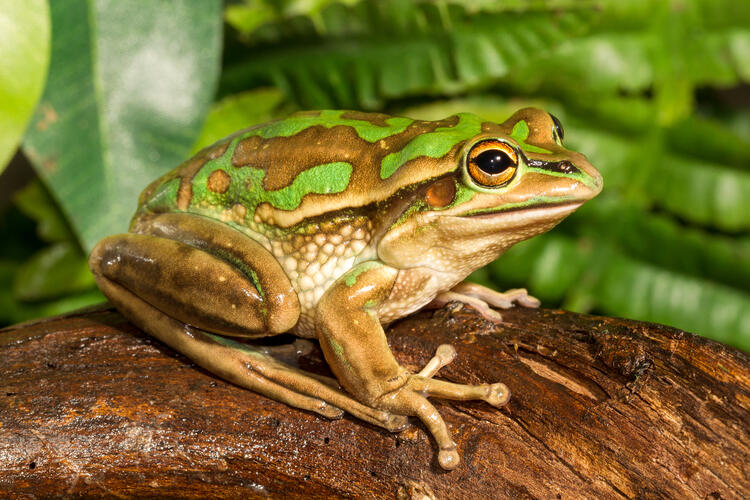
Amphibians are being wiped out due to a fungal infection, but now scientists have developed a special frog sauna that could save a rare frog
By
It’s no secret that the biodiversity of our planet is in peril. There are an estimated eight million species of plants and animals on Earth, of which a minimum of 15,000 are threatened with extinction. Most scientists agree that this represents an extinction threat hundreds of times above the baseline rate of one species per million per year. All families of plants and animals are threatened by this sixth mass extinction event, but none more so than amphibians.
Amphibians, which comprise frogs, toads, newts, salamanders and the bizarre, worm-like caecilians, live on every continent except Antarctica. In total, there are 8,450 known species of amphibian (of which 7,468 are frogs or toads), but new species are found almost every year. Of these, 41 per cent of species are threatened with extinction (twenty years ago, the figure was 39 per cent). Some 200 amphibian species have already gone extinct since 1980, and many scientists believe that between a third and a half of all amphibian species could go extinct before the end of this century.
There are several reasons for this dramatic decline in amphibians. Habitat loss plays a major role, as does climate change. Most amphibians need a damp environment to survive, and most of their tadpole larvae live in ponds, lakes, rivers, and streams. However, as wetlands are drained for agriculture and other developments or dry up due to climate change, amphibians lose their homes.
However, habitat loss and climate change are not the only reasons for the global decline in amphibians. An even bigger threat comes from disease and chytridiomycosis in particular. Caused by two species of microscopic fungus – Batrachochytrium dendrobatidis (Bd) and B. salamandrivorans (Bsal) – chytridiomycosis (often shortened to just chytrid) originated on the Korean peninsula but has rapidly spread across the world through the international trade in amphibians and plants, and as fungal spores on our shoes and clothing. Fungus spores, which live in water, settle on the skin of an amphibian and infect it. They then cannot regulate the water moving through its permeable skin, which often leads to death.
Scientists have been battling the disease but have met with limited success. Now, though, a new study conducted by a team from Australia’s University of Macquarie might have come up with a solution that could help at least some amphibian species. The Australian green and the golden bell frog were once common in southeastern Australia, but they have both been hard hit by chytrid, leading to population declines of around 90 per cent. The research team discovered that by creating frog ‘saunas’ out of masonry bricks painted black and placed inside a greenhouse, the frogs could clear themselves of the disease. Afterwards, they gained some natural immunity to chytrid.
Dr Anthony Waddle, lead author of the study, said of the findings: ‘In the 25 years since chytridiomycosis was identified as a major cause of the global collapse of amphibian populations, our results are the first to provide a simple, inexpensive and widely applicable strategy to buffer frogs against this disease.’ He continued by saying: ‘As with many human diseases, such as influenza, chytridiomycosis is seasonal. Winter is a particularly vulnerable time for frogs, given there are few opportunities to heat themselves. By making hot spots available to frogs in winter, we empower them to cure their infections, or not even get sick at all.’
However, we can’t breathe a sigh of relief just yet because this technique has a couple of notable problems. First, the frogs must be encouraged to use these ‘saunas,’ and this might be difficult to do on a wide scale in the wild. Second, similar heat techniques were often unsuccessful when tried on other amphibian species.
Related articles:




